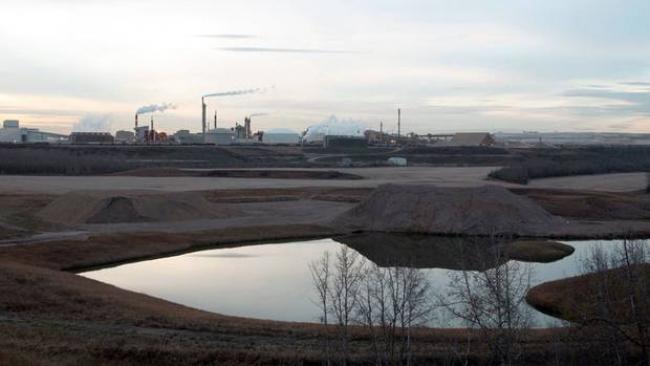Articles Menu

New air-quality tests in one of Canada’s largest petrochemical processing regions have revealed more evidence of short-lived but concentrated plumes of toxic chemicals.
The tests by a Nobel Prize-winning lab at University of California, Irvine, echo previous results scientists have recorded for known carcinogens in the area northeast of Edmonton.
“It is a snapshot, but it’s no fluke,” said Donald Blake, who heads the lab.
Researchers visited what’s called Alberta’s Industrial Heartland – home to more than 40 petrochemical companies – in July, 2012. They collected 96 samples of air nearby and in upwind rural areas.
The results vary widely, although the majority are well under Alberta’s limits. But for July 8-12 of that year, researchers found three days that had brief, dramatic spikes in levels of benzene, a known carcinogen for which there is no safe level.
One sample reached 11 parts per billion, one was 24 ppb and a third was 156 ppb.
“These are the kinds of numbers we don’t see in Los Angeles,” said Dr. Blake.
Alberta’s recommended level is 9 ppb averaged over an hour. The monitor of air quality in the region reports benzene exceeded that level only once during all of 2012.
Dr. Blake suggested the short-term spikes may have been lost when averaged over an hour.
“If this is something that is blowing at somebody’s house, and they’re getting five to 20 parts per billion of benzene at them all the time … that starts to worry me.”
It’s the third time his lab has come to the Industrial Heartland.
Visits in 2008 and 2010 resulted in a peer-reviewed and published study in 2013 that found smog-causing chemicals at levels comparable to – and occasionally many times higher than – some of the world’s largest cities and industrial complexes.
Researchers also found blood cancers in men in the three counties surrounding the heartland to be consistently higher over the years 1997-2006 than for neighbouring counties. No link was proven.
The 2012 results have not been published. They were released to The Canadian Press upon the news agency’s request.
Warren Kindzierski, a professor in the University of Alberta’s public Health department, called the results interesting, but said more data is needed to confirm whether transient puffs of tainted air are slipping by monitors. There’s a good statistical chance the high results could be an error, he suggested.
“They’ve got some good data here. I think the evidence is not all there yet.”
Monitoring plumes is tricky, said Kindzierski, who’s been working with the Fort McKay First Nation near the oilsands to set up a program.
“They’ve been doing it for three or four years and it is not easy.”
A spokeswoman for Alberta Environment said air-quality guidelines followed by the Heartland’s monitor are set by a group including the government, environmentalists and industry.
The spokeswoman, who was provided with the data from the California lab, declined to comment on its findings.
“It would be difficult to provide a comment to this latest data that has not yet been made publicly available or provided to us directly by (the university).”
Premier Rachel Notley didn’t hold back when she commented as the NDP environment critic on the same lab’s 2013 paper.
“A better response would be to take it very, very seriously and immediately commit to doing a review of the comprehensiveness and efficacy of the air-quality testing that’s going on,” she said at the time.
[End of article]